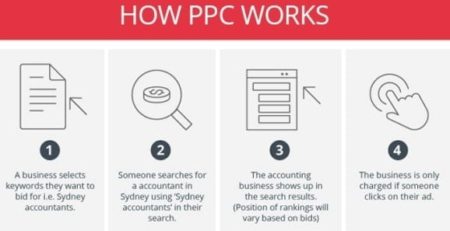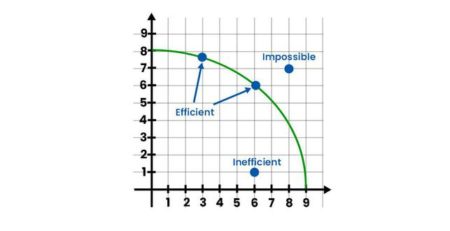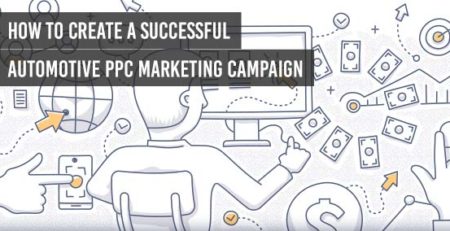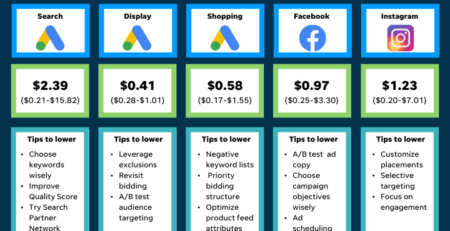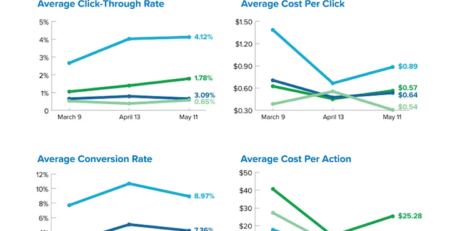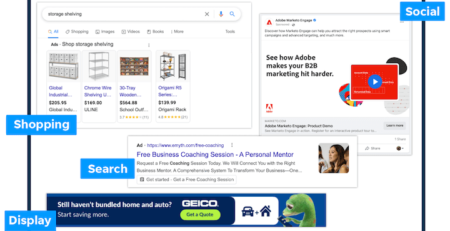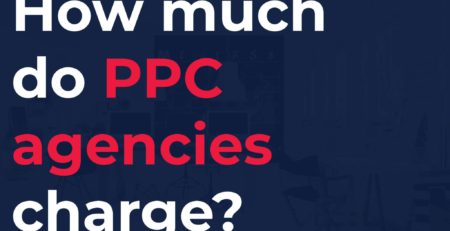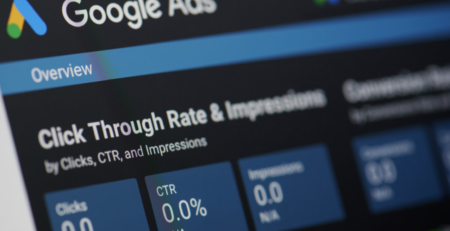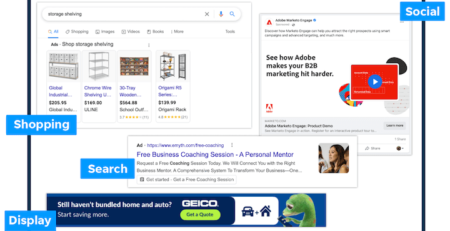How To Use Pay Per Click Advertising?
Are you curious about how to use pay-per-click advertising? Well, buckle up because I’m here to show you the ropes! Pay-per-click advertising, also known as PPC, is a powerful tool that can help businesses reach their target audience and drive traffic to their websites. So, if you’re ready to dive into the world of PPC, keep reading to discover the ins and outs of this effective advertising strategy.
In a nutshell, pay-per-click advertising is a way for businesses to place ads on search engine results pages or other websites and only pay when someone clicks on their ad. It’s like renting a billboard and only paying for the number of people who actually stop to look at it. Cool, right? By bidding on certain keywords relevant to their business, companies can have their ads appear when people search for those keywords.
So, how exactly does pay-per-click advertising work? Well, imagine you’re looking for a new pair of sneakers, and you type “best running shoes” into a search engine. Voila! Alongside the search results, you’ll see sponsored ads related to running shoes. These ads are created by businesses using PPC advertising. When you click on one of those ads, the company pays a small fee to the search engine. It’s a win-win situation: you find the perfect sneakers, and the company gets targeted traffic to their website.
Now that you have a basic understanding of pay-per-click advertising, get ready to learn the strategies, tips, and tricks to make the most of this powerful tool. Whether you’re a business owner looking to increase your online presence or just a curious mind eager to explore the world of digital marketing, this guide will equip you with the knowledge you need to navigate the exciting world of PPC. Let’s get started!
Are you ready to take your business to the next level? Follow these steps to effectively use pay per click (PPC) advertising:
- Identify your goals and target audience
- Create compelling ad copy and choose relevant keywords
- Set your budget and bidding strategy
- Monitor and analyze your campaign performance
- Optimize your ads for better results
With these strategies in place, you can drive targeted traffic, increase conversions, and maximize your ROI with PPC advertising.
How to Use Pay Per Click Advertising: A Comprehensive Guide
Pay Per Click (PPC) advertising is an effective and popular approach for driving targeted traffic to your website. It allows advertisers to bid on specific keywords related to their business and pay only when someone clicks on their ad. This article will provide a comprehensive guide on how to use PPC advertising effectively to boost your online presence, increase website traffic, and ultimately achieve your business goals.
Understanding Pay Per Click Advertising
Pay Per Click advertising is an online advertising model where advertisers pay a fee each time their ad is clicked. It is an effective way to drive targeted traffic to your website and generate leads or sales. PPC platforms like Google Ads, Bing Ads, and Facebook Ads provide tools for creating, managing, and optimizing your PPC campaigns.
1. Setting Up Your PPC Account
To get started with PPC advertising, you need to set up an account with a PPC platform like Google Ads. Sign up for an account, provide the necessary information about your business, and set a budget for your PPC campaigns. Choose relevant keywords that are relevant to your business and create compelling ads that will attract potential customers.
Benefits of PPC Advertising
– Immediate results: Unlike Search Engine Optimization (SEO), which can take months to see results, PPC advertising allows you to start driving traffic to your website immediately.
– Targeted traffic: With PPC, you can target specific keywords, demographics, locations, and devices to reach your ideal audience.
– Cost control: You have full control over your budget and can set a maximum cost per click (CPC) to ensure you don’t spend more than your allocated budget.
Tips for Setting Up Your PPC Account
– Research keywords: Conduct thorough keyword research to identify relevant keywords that are likely to be searched by your target audience. Use keyword research tools like Google Keyword Planner or SEMrush.
– Ad copy: Create compelling and engaging ad copy that entices users to click on your ads. Highlight your unique selling points and include a strong call-to-action.
– Landing page optimization: Make sure your landing pages are optimized for conversions. A clear and concise message, relevant content, and a prominent call-to-action will help improve your conversion rates.
2. Creating Effective PPC Campaigns
Once you have set up your PPC account, it’s time to create your campaigns. Structure your campaigns into ad groups based on relevant themes or keywords. This will allow you to create specific ads for each group and monitor their performance more effectively.
Tips for Creating Effective PPC Campaigns
– Ad copy: Write compelling and relevant ad copy that aligns with the keywords and ad groups. Use action words, highlight unique selling points, and include a call-to-action to encourage users to click on your ads.
– Ad extensions: Take advantage of ad extensions like sitelink extensions, call extensions, and review extensions to provide additional information and boost your ad’s visibility.
– A/B testing: Continuously test different variations of your ads to identify which ones perform best. Test different headlines, ad copy, and call-to-actions to optimize your ads for maximum click-through rates.
3. Monitoring and Optimizing Your PPC Campaigns
The key to a successful PPC campaign is constant monitoring and optimization. Regularly review your campaign performance metrics like click-through rates (CTR), conversion rates, and return on ad spend (ROAS) to identify areas for improvement.
Tips for Monitoring and Optimizing Your PPC Campaigns
– Keyword performance: Monitor the performance of your keywords and identify any underperforming keywords. Pause or remove these keywords to allocate your budget more effectively.
– Ad scheduling: Analyze the performance of your ads at different times of the day and week. Adjust your ad scheduling to maximize your exposure during peak periods.
– Ad testing: Continuously test different variations of your ads to identify which ones perform best. Test different headlines, ad copy, and call-to-actions to optimize your ads for maximum click-through rates.
Advanced PPC Strategies
1. Remarketing
Remarketing is a PPC strategy that involves targeting users who have previously visited your website. It allows you to stay top of mind with potential customers and increase the chances of converting them into leads or customers.
Benefits of Remarketing
– Increased brand visibility: Remarketing helps keep your brand in front of potential customers, even after they have left your website.
– Higher conversions: By targeting users who have shown interest in your products or services, you increase the likelihood of converting them into customers.
– Cost-effective: Remarketing campaigns often have a higher ROI compared to other PPC strategies, as you are targeting a warm audience that is already familiar with your brand.
Tips for Implementing Remarketing
– Set up remarketing tags: Install remarketing tags on your website to track visitors and create remarketing lists based on specific actions or pages they visit.
– Segment your audience: Create different remarketing lists based on user behavior, such as product page viewers, cart abandoners, or past customers. Customize your ad messaging to target each segment effectively.
– Dynamic remarketing: Use dynamic remarketing to show personalized ads to users based on the specific products or services they viewed on your website.
2. Mobile Advertising
Mobile advertising has become increasingly important as more and more people access the internet through their mobile devices. Optimizing your PPC campaigns for mobile devices can help you reach a larger audience and drive more conversions.
Benefits of Mobile Advertising
– Increased reach: Mobile devices have a broader reach compared to desktops, as more people are using smartphones and tablets.
– Higher engagement: Mobile users tend to be more engaged with ads and are more likely to take action.
– Location-based targeting: Mobile advertising allows you to target users based on their location, which can be especially effective for businesses with physical locations.
Tips for Optimizing Your Mobile Advertising
– Mobile-friendly ads: Ensure that your ads are mobile-friendly and optimized for smaller screens. Use shorter ad copy, clear call-to-actions, and mobile-responsive landing pages.
– Location targeting: Use location targeting to reach users who are in proximity to your business. Tailor your ad messaging to appeal to users in the specific location.
– Mobile bid adjustments: Adjust your bids for mobile devices based on their performance compared to desktops. Allocate more budget to mobile ads if they are driving stronger results.
Conclusion
Using pay-per-click advertising can be a highly effective way to drive targeted traffic to your website and achieve your business goals. By following the steps outlined in this guide, you can set up and optimize your PPC campaigns for success. Remember to continuously monitor and refine your campaigns to maximize their performance. With the right strategy and ongoing optimization, PPC advertising can become a valuable tool in your digital marketing arsenal.
Key Takeaways: How to Use Pay Per Click Advertising?
- Pay per click advertising is a way to promote your business online by paying for clicks on your ads.
- Choose relevant keywords that will attract your target audience.
- Create compelling ad copy that grabs attention and encourages clicks.
- Set a budget and bid amount for your ads to control your spending.
- Regularly monitor and optimize your PPC campaigns for better results.
Frequently Asked Questions
Here are some common questions and answers to help you understand how to use pay per click advertising effectively.
How does pay per click advertising work?
Pay per click advertising is an online advertising model where advertisers pay a fee each time their ad is clicked. It works by placing ads on search engine result pages or websites, and when a user clicks on the ad, the advertiser pays for that click. The goal is to drive traffic to the advertiser’s website and generate leads or sales.
When setting up a pay per click campaign, you choose keywords related to your business. When a user searches for those keywords, your ad may appear on the search engine results page. If the user clicks on your ad, they are directed to your website, and you are charged for that click.
How can I choose the right keywords for my pay per click campaign?
Choosing the right keywords is crucial for the success of your pay per click campaign. Start by brainstorming relevant keywords that your target audience might use when searching for products or services like yours. Use keyword research tools to check the search volume and competition for each keyword.
Focus on selecting keywords that are relevant to your business and have a good search volume but low competition. Long-tail keywords, which are more specific, can also be effective in targeting a niche audience. Constantly monitor and refine your keyword list to optimize your campaign’s performance.
What is the importance of ad copy in pay per click advertising?
The ad copy is essential in pay per click advertising as it determines whether a user will click on your ad or not. It should be engaging, concise, and relevant to the user’s search intent. The ad copy should highlight the unique selling points of your product or service and convince the user to take action.
A well-crafted ad copy can lead to higher click-through rates and better conversion rates. Experiment with different ad copy variations and A/B test them to see which ones resonate best with your target audience. Continuously optimize and refine your ad copy to improve the performance of your pay per click campaign.
What are landing pages and why are they important in pay per click advertising?
A landing page is a dedicated web page that users are directed to after clicking on your pay per click ad. It is designed to match the content and intent of the ad and provide relevant information to encourage the user to take action, such as making a purchase or filling out a form.
Landing pages are important in pay per click advertising because they play a crucial role in converting clicks into leads or sales. A well-designed and optimized landing page can improve the user experience and increase the chances of conversion. Make sure your landing page is mobile-friendly, loads quickly, and has a clear call to action.
How can I track the performance of my pay per click campaign?
Tracking the performance of your pay per click campaign is essential to measure its success and make data-driven decisions for optimization. Utilize tools like Google Analytics or the tracking features provided by the advertising platforms to monitor key metrics, such as click-through rates, conversion rates, and return on ad spend.
Set up conversion tracking to track specific actions on your website, such as form submissions or purchases. Analyze the data regularly, identify trends, and make adjustments to your campaign based on the insights gathered. Continuously testing and analyzing different elements of your campaign will help you improve its performance over time.
Pay-Per-Click-Advertising Explained For Beginners
Summary
Pay Per Click Advertising is a useful tool for businesses to get more online visibility. It involves creating ads and paying only when someone clicks on them. To use it effectively, you need to research keywords, write compelling ad copy, and set a budget. It’s important to track your ad performance and make adjustments as needed. By using PPC advertising, businesses can reach their target audience and maximize their online presence.
In conclusion, Pay Per Click Advertising is a valuable strategy for boosting your online presence. By following the steps outlined in this article, businesses can create effective ads and increase their visibility to their target audience. So, don’t miss out on the opportunity to use PPC advertising to grow your business online!


